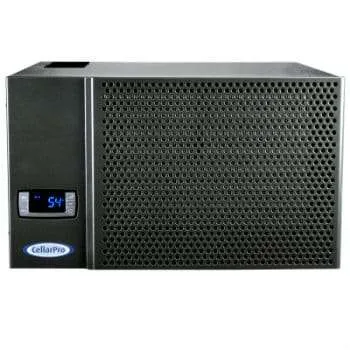Installing a wine cooling system is a great way to preserve your wine collection and ensure it ages perfectly. However, the installation process can come with its own set of challenges. Whether you’re a wine enthusiast or a professional installer, understanding these potential issues can save you time, money, and frustration. In this blog, we’ll explore the different problems you might encounter while installing a wine cooling system and how to address them.
1. Incorrect Sizing of the Cooling System
One of the most common mistakes is choosing a cooling system that’s either too large or too small for your wine cellar or storage space.
Problem: An undersized unit won’t effectively cool the space, while an oversized unit can cause temperature fluctuations and excessive humidity.
Solution: Calculate the cooling load based on the size of your cellar, insulation quality, and the number of bottles stored. Consult a professional if needed to ensure the right fit.
2. Poor Insulation and Ventilation
Proper insulation and ventilation are critical for the efficient operation of a wine cooling system.
Problem: Inadequate insulation can lead to heat exchange with the surrounding environment, making the cooling system work harder and increasing energy costs. Poor ventilation can cause overheating of the unit.
Solution: Ensure your wine cellar is well-insulated with materials like spray foam or rigid foam boards. Provide proper ventilation to allow the cooling system to expel heat effectively.
3. Improper Placement of the Cooling Unit
Where you place the cooling unit can significantly impact its performance.
Problem: Placing the unit in a cramped or enclosed space can restrict airflow, leading to inefficiency and potential system failure.
Solution: Follow the manufacturer’s guidelines for installation. Ensure there’s enough clearance around the unit for proper airflow and maintenance access.
4. Electrical and Wiring Issues
Wine cooling systems require a dedicated power source and proper wiring to function safely and efficiently.
Problem: Overloading circuits or using incorrect wiring can lead to electrical failures, short circuits, or even fire hazards.
Solution: Hire a licensed electrician to install a dedicated circuit for the cooling system. Ensure the wiring meets local electrical codes and the manufacturer’s specifications.
5. Temperature and Humidity Control Challenges
Maintaining the ideal temperature (45–65°F) and humidity (50–70%) levels is crucial for wine storage.
Problem: Fluctuating temperatures or incorrect humidity levels can damage your wine, causing corks to dry out or labels to peel.
Solution: Invest in a cooling system with precise temperature and humidity controls. Use a hygrometer to monitor humidity levels and a backup generator to prevent temperature spikes during power outages.
6. Noise and Vibration Concerns
Some wine cooling systems can produce noise or vibrations, which may be disruptive or harmful to your wine.
Problem: Excessive vibrations can disturb the sediment in wine bottles, affecting the aging process. Noise can be a nuisance if the cellar is near living spaces.
Solution: Choose a cooling system designed to operate quietly and with minimal vibration. Install the unit on a stable surface and use anti-vibration pads if necessary.
7. Condensation and Moisture Build-Up
Condensation can occur if the cooling system is not properly installed or maintained.
Problem: Excess moisture can lead to mold growth, damage to wine labels, and even structural issues in your cellar.
Solution: Ensure the cooling system has proper drainage and a dehumidification feature. Regularly inspect the unit for leaks or condensation build-up.
8. Compatibility with Existing Cellar Design
If you’re retrofitting a cooling system into an existing wine cellar, compatibility issues may arise.
Problem: The cooling system may not integrate well with the cellar’s design, leading to inefficiencies or aesthetic concerns.
Solution: Work with a professional to design a system that complements your cellar’s layout and meets your storage needs.
9. Maintenance and Service Accessibility
Regular maintenance is essential to keep your wine cooling system running smoothly.
Problem: Poorly installed systems can make maintenance difficult, leading to neglected upkeep and potential breakdowns.
Solution: Ensure the unit is installed in a location that allows easy access for cleaning, filter changes, and repairs. Schedule regular maintenance checks to prevent issues.
Conclusion
Installing a wine cooling system is a worthwhile investment for any wine collector, but it’s not without its challenges. From sizing and placement to electrical requirements and humidity control, there are several factors to consider. By understanding these potential problems and taking proactive steps to address them, you can ensure a smooth installation process and enjoy perfectly preserved wine for years to come.
Have you encountered any issues while installing a wine cooling system? Share your experiences and tips in the comments below! 🍷






